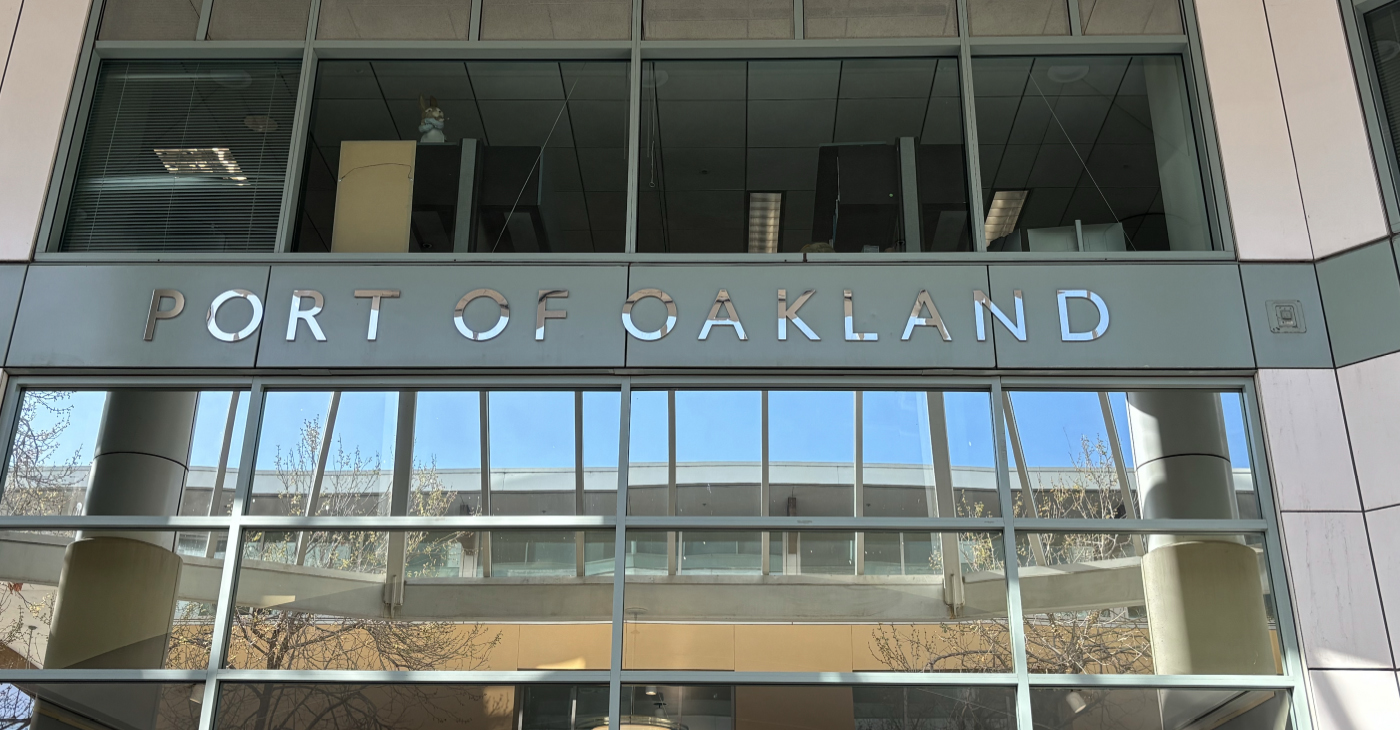Transportation
Car Review: 2015 Cadillac ATS Coupe
By Frank S. Washington
NNPA Columnist
DETROIT (NNPA)–Cadillac has got something. Its two-seat version of the ATS sedan was slick, fun to drive and it had plenty of style. We test drove the 2015 ATS Coupe 3.6L RWD Premium. That translated into a 2+2 coupe with a 3.2-liter V6 that made 321 horsepower and 275 pound-feet of torque at 4,800 rpm.
Mated to a six-speed automatic transmission, this powertrain was quick, responsive to driver input and propelled our test car just about effortlessly. The Cadillac ATS Coupe was pretty light at 3,400 pounds. We had the rear-wheel-drive version of the ATS Coupe; it also comes with all-wheel-drive. That meant our test car got 18 mpg in the city, 28 mpg on the highway and 22 mpg combined. It was a nice package but on a long highway drive, our ATS’ 450-mile range may have been its only shortcoming, if that could be categorized as a shortcoming.
The car had a 50-50 weight distribution, a lightweight five-link rear suspension and a MacPherson-strut front suspension with direct acting stabilizer bar. Powering through a curved expressway entrance, the ATS Coupe tracked well, stayed perpendicular to the pavement and it could have gone even faster than the 45 mph we were going rather than the 25 mph maximum speed that was posted. It was a great ride.
The 2015 Cadillac ATS Coupe handled with rifle shot accuracy. It had a belt driven electric variable steering gear, Brembo brakes and 18-inch machine finished aluminum alloy wheels. It had an adjustable suspension with sport, touring and snow/ice settings. It also had Magnetic Ride Control, which was a real time damping system that read the roads and changed damping in a millisecond for better body control.
It shared the same 109.3-inch wheelbase as the ATS sedan but the ATS Coupe’s sheet metal was slightly different. It had its own doors, rear fenders and trunk lid. The front fascia and front fenders were altered to accommodate the Coupe’s wider track and the Coupe is the first Cadillac to sport the brand’s revised crest badge.
The Coupe also shared what is becoming a Cadillac signature, LEDs that form light sabre-like vertical fins that frame the headlights, the grille and the lower front fascia. Our test vehicle also featured illuminating door handles. But with any vehicle, luxury is conveyed in the interior and the ATS Coupe did not disappoint. The interior from the sedan carried over into the Coupe. In fact, this interior is used in every Cadillac.
It featured hand-cut and decoratively stitched upholstery material and leather. Our test vehicle had real wood trim; carbon fiber and aluminum trim are also available. But run your hand on the open pore wood trim of our test vehicle and the grain in the wood could be felt. It was a small characteristic but a giant step towards Cadillac returning to its pinnacle as one of the best luxury marques in the world.
Our coupe was a 2+2 and that translated into full back seats that were pinch for the passenger/s who had to sit in them. The seat backs would fold creating more cargo space. Of course, the car featured the CUE system. This infotainment system is still a love it or hate it affair. But there’s very little controversy over how it looks: clean, angular and melded with Cadillac’s overall design language. That no doubt is why the CUE (Cadillac User Experience) appears at home in every Cadillac.
The Coupe featured the most up-to-date version of CUE. It had text to voice and Sire Eyes Free for iPhone operating systems six and seven. Cadillac said it could be connected to the ATS by voice controls.
There are no buttons on the CUE system. It had an eight-inch touch screen as well as a capacitive faceplate. Complaints have been lodged that it is too slow, it is hard to operate and even more difficult to master. But the more we encounter this system, the more comfortable we become in its operation. That was the case with the 2015 Cadillac ATS Coupe.
Our test vehicle also featured OnStar and it held the latest technology from General Motors. Cadillac’s CUE on the ATS had a 4G LTE. In other words, the 2015 Cadillac ATS was a rolling Wi-Fi hotspot capable of connecting seven devices. This ATS Coupe had remote start, a passive entry system (read push button lock and unlock), alloy sport pedals, rear vision camera, configurable heads up display, heated steering wheel and front seats, wireless charging and push button start/stop.
It was a sharp car. The 2015 ATS Coupe was yet another product/rung in Cadillac’s climb back to prominence in the luxury vehicle segment. Our test vehicle had a base price of $50,325. Add $2,290 worth of options and Cadillac’s $995 freight charge and the total sticker came to $53,610.
Frank S. Washington is editor of AboutThatCar.com.
###
Bay Area
Port of Oakland Commission Votes to Change Oakland Airport to ‘San Francisco Bay Oakland International Airport’
The Port of Oakland Commission voted unanimously to change the name of Metropolitan Oakland International Airport to San Francisco Bay Oakland International Airport at a commission meeting Thursday afternoon. The Port initially announced the name change on March 29, claiming that the change will attract more passengers and enhance the airport’s visibility. They contend that the airport often gets neglected by the public’s lack of knowledge of Oakland’s proximity to San Francisco.

By Magaly Muñoz
The Port of Oakland Commission voted unanimously to change the name of Metropolitan Oakland International Airport to San Francisco Bay Oakland International Airport at a commission meeting Thursday afternoon.
The Port initially announced the name change on March 29, claiming that the change will attract more passengers and enhance the airport’s visibility. They contend that the airport often gets neglected by the public’s lack of knowledge of Oakland’s proximity to San Francisco.
“We want people to know where Oakland is and how beautiful our city is. We want them to visit, we want them to spend their money, and we want to keep our money into our local economy,” Port Commission President Barbara Leslie said at the meeting.
The commissioners shared anecdotal experiences and research to explain how this new name change will elevate and add to the growth of Oakland, not take away from their Bay Area neighbors.
The Port claimed that local residents had been asking for more options in domestic and international flights, but in order to do that, outside travelers need to be aware of Oakland’s presence first.
Since the announcement of the new name, San Francisco leaders strongly opposed the suggestion for a change, the City Attorney going as far as threatening legal action.
SF City Attorney David Chiu announced Monday that his team sent a letter to the Port of Oakland, writing that if Oakland goes forward with the name change, the city will go forward with a lawsuit to prevent the use of their trademarked name.
San Francisco owns U.S. federal trademark registrations for the marks “San Francisco International Airport”, the letter says.
Chiu further claimed that the name change will only cause confusion and chaos for travelers who are used to seeing the San Francisco name in the SFO trademark.
“We want to see the entire Bay Area thrive as a tourist destination and expand our offerings to visitors, but this proposal is not a legal or practical way to go about it. If Oakland moves forward with this proposal, San Francisco will pursue legal action to prevent misuse of our trademark,” Chiu said.
SF Mayor London Breed joined Chiu’s letter, stating that Oakland does not need to add the internationally popular city to its brand in order to grow its services.
“[Oakland] is rich in culture and wonderful people and has its own unique identity. It does not need the name San Francisco as part of its airport to stand out,” Breed wrote.
The Port defended its proposed actions, saying that if the vote did go forward, they would “take all appropriate measures to defend its right to use this accurate geographic identifier.”
“The proposed name modification will clarify, not confuse. The new name identifies where OAK is actually located, which is on the San Francisco Bay,” a spokesperson said on behalf of the Port.
Support for the name change extends beyond the Port. Several regional leaders, airlines and community members have come out in support of the name change, including Oakland Mayor Sheng Thao.
“This adjustment isn’t just about signage—it’s about inviting travelers to discover all that Oakland and the region have to offer. From our local dining scene to unique shopping spots and cozy hotels, there’s something here for everyone. Let’s work together to ensure that Oakland Airport continues to serve as a welcoming gateway for visitors and a source of pride for our community,” Thao said.
Because of public outcry amongst residents and leaders in Oakland and San Francisco before and during the Commission meeting, the Board decided to extend the second reading for the proposed name change from the end of April to the first meeting in May. This decision will allow commissioners to connect with community groups and leaders over their concerns for the change.
The Port Commission is scheduled to hold a second reading of the proposed name change on May 9.
Bay Area
Oakland Finishes Final Draft of Downtown Specific Plan for Potential City Improvements
In late March, Oakland’s city administration announced the final draft of their Downtown Specific Plan, a blueprint for city improvements and developments over the next 20 years. The comprehensive 474-page plan lays out policies for downtown developments that will increase economic, social and cultural, and communal opportunities for residents and workers who frequent this essential hub in Oakland.

By Magaly Muñoz
In late March, Oakland’s city administration announced the final draft of their Downtown Specific Plan, a blueprint for city improvements and developments over the next 20 years.
The comprehensive 474-page plan lays out policies for downtown developments that will increase economic, social and cultural, and communal opportunities for residents and workers who frequent this essential hub in Oakland.
Several departments over the course of eight years developed the plan, with two phases that emphasized a need for community input from local stakeholders, such as leaders and residents, and a focus on the role of social and racial equity in past and future developments.
Throughout the extensive plan, the concept of equity for marginalized communities is embedded with each goal and priority for the improvements to downtown. It acknowledges that social and racial barriers are preventing these communities from thriving on an equal playing field.
The authors identified six key disparities, or ‘equity indicators’, that set the baseline for how success will be measured for the improvements. These indicators include the burden of housing costs, homelessness, displacement, disconnected youth, unemployment rate and median income.
The plan is also broken up into chapters, each describing a major issue or topic that is plaguing downtown residents and workers, such as mobility, culture preservation, community health and sustainability, and land use and urban design.
Within each chapter, the authors dedicate a section to the impacts of the COVID-19 pandemic for the various areas of interest, illustrating how disparities and inequities increased before and after the disease’s peak.
Two major issues highlighted in the plan are economic opportunity and housing and homelessness. Both of these issues have been aggravated by the pandemic and require substantial support and resources to move forward.
Many reports coming out of the commercial and residential districts downtown have blamed the rise in crime and cost of living as reasons for leaving Oakland for other cities or closing down indefinitely.
The plan attributes rising rents of both residential and commercial properties to the displacement of local businesses and entrepreneurs. Downtown also has an imbalance in the jobs to housing ratio, which limits access to jobs as commuting distances increase.
Other concerns for the local economy are barriers to employment opportunities for workers of color, non-English speakers, and those with limited access to transportation. As stated in the plan, downtown also has a lack of vacancies near public transit hubs, such as BART, bus stops or ferry terminals, which could save workers money and time for their commutes into the city.
According to the downtown plan, the average unemployment rate for the white population was 5.9%, but the Asian population was at 6.7%, and for the Black population it was even higher at 10.4%.
The proposed solutions for the lack of economic prosperity include providing assistance to local businesses owned by people of color, reinforcing downtown as the ‘place to be’ for nightlife entertainment, and building businesses closer to public transit.
The addition of over 18.3 million (m) sq. ft. of new commercial space, 1.3m sq. ft. of new institutional space, and 500,000 sq. ft. of new industrial space, could potentially create almost 57,000 jobs downtown.
Housing and homelessness, issues closely tied to economic prosperity, are top concerns for Oakland residents. High rents have led to displacement and homelessness for those unable to keep up with the rising costs of the Bay Area.
Over 5,000 people are currently experiencing homelessness in Oakland, according to 2022 Point In Time data. 60% of this population is Black despite only making up nearly 20% of the total city population.
The plan explains that by adding nearly 29,000 new homes and expanding affordable housing units across the city by 2040, this would help alleviate the stress of obtaining and affording a home.
Strategies proposed to tackle the housing and homelessness crisis include increasing renter protections, providing additional shelters and services for homeless residents, and promoting homeownership in downtown with first-time buyer assistance and proactive assistance to vulnerable homeowners.
The plan acknowledges that the implementation of changes and developments amongst the several concerns outlined in the document will take time, both in short and long term periods.
To better explain how and when each project will be addressed over the course of the next two decades, a detailed 123-page graph shows which agencies, potential funding sources, and costs come with the goals.
The Oakland Planning Commission and Landmarks Preservation Advisory Board will each hold public hearings regarding the final draft of the Downtown Plan in May and June.
Bay Area
Bikes Now Allowed on BART Escalators
As of Jan. 1, bikes are allowed on most of the escalators throughout BART, a new rule change that aims to make it easier for cyclists to board trains. Bikes will only remain banned from BART’s 10 narrow escalators located at the 19th Street Oakland, Antioch and Oakland Airport Connector stations, according to the transit agency.

The Richmond Standard
As of Jan. 1, bikes are allowed on most of the escalators throughout BART, a new rule change that aims to make it easier for cyclists to board trains.
Bikes will only remain banned from BART’s 10 narrow escalators located at the 19th Street Oakland, Antioch and Oakland Airport Connector stations, according to the transit agency.
BART is also now allowing bikes on all train cars except for the first car. Bikes were previously banned from the first three cars during commute times.
Ten years ago, BART ended a ban on bikes on the transit system during the commute hours. Over the last decade, the transit agency noted the growing popularity of larger, heavier bicycles.
“Carrying bikes up and down stairwells can be difficult and not all bikes fit in our elevators,” said BART Director Rebecca Saltzman. “Updating our rules will make BART easier to use for cyclists and families bringing bikes on the train. Bikes play an important role in getting people out of their cars and on public transit and these updated rules encourage environmentally friendly multimodal travel options.”
BART encouraged riders to use their best judgment when using escalators. The transit agency released a new video detailing safety tips for bringing bikes on escalators in the system.
BART offers this Elevator Dimension Guide to provide cyclists with dimensions of each elevator in the system, including measurements of the door, width, length, and diagonal space across the floor.
-

 Activism4 weeks ago
Activism4 weeks agoOakland Post: Week of March 20 – 26, 2024
-

 #NNPA BlackPress3 weeks ago
#NNPA BlackPress3 weeks agoCOMMENTARY: D.C. Crime Bill Fails to Address Root Causes of Violence and Incarceration
-

 #NNPA BlackPress3 weeks ago
#NNPA BlackPress3 weeks agoMayor, City Council President React to May 31 Closing of Birmingham-Southern College
-

 #NNPA BlackPress4 weeks ago
#NNPA BlackPress4 weeks agoCOMMENTARY: Lady Day and The Lights!
-

 #NNPA BlackPress3 weeks ago
#NNPA BlackPress3 weeks agoFrom Raids to Revelations: The Dark Turn in Sean ‘Diddy’ Combs’ Saga
-

 Activism3 weeks ago
Activism3 weeks agoOakland Post: Week of March 27 – April 2, 2024
-

 #NNPA BlackPress4 weeks ago
#NNPA BlackPress4 weeks agoBaltimore Key Bridge Catastrophe: A City’s Heartbreak and a Nation’s Alarm
-

 #NNPA BlackPress3 weeks ago
#NNPA BlackPress3 weeks agoBaltimore’s Key Bridge Struck by Ship, Collapses into Water













































